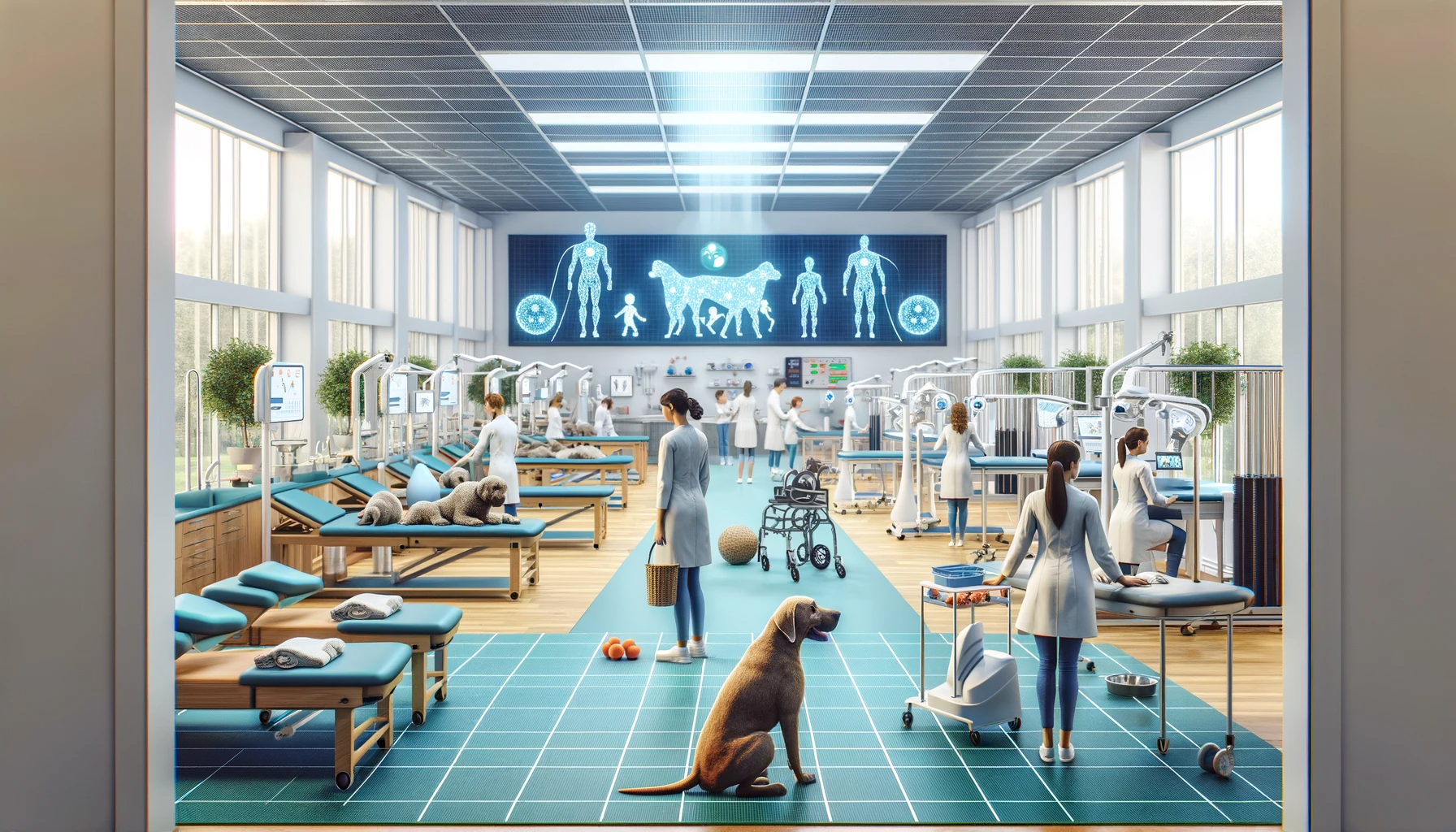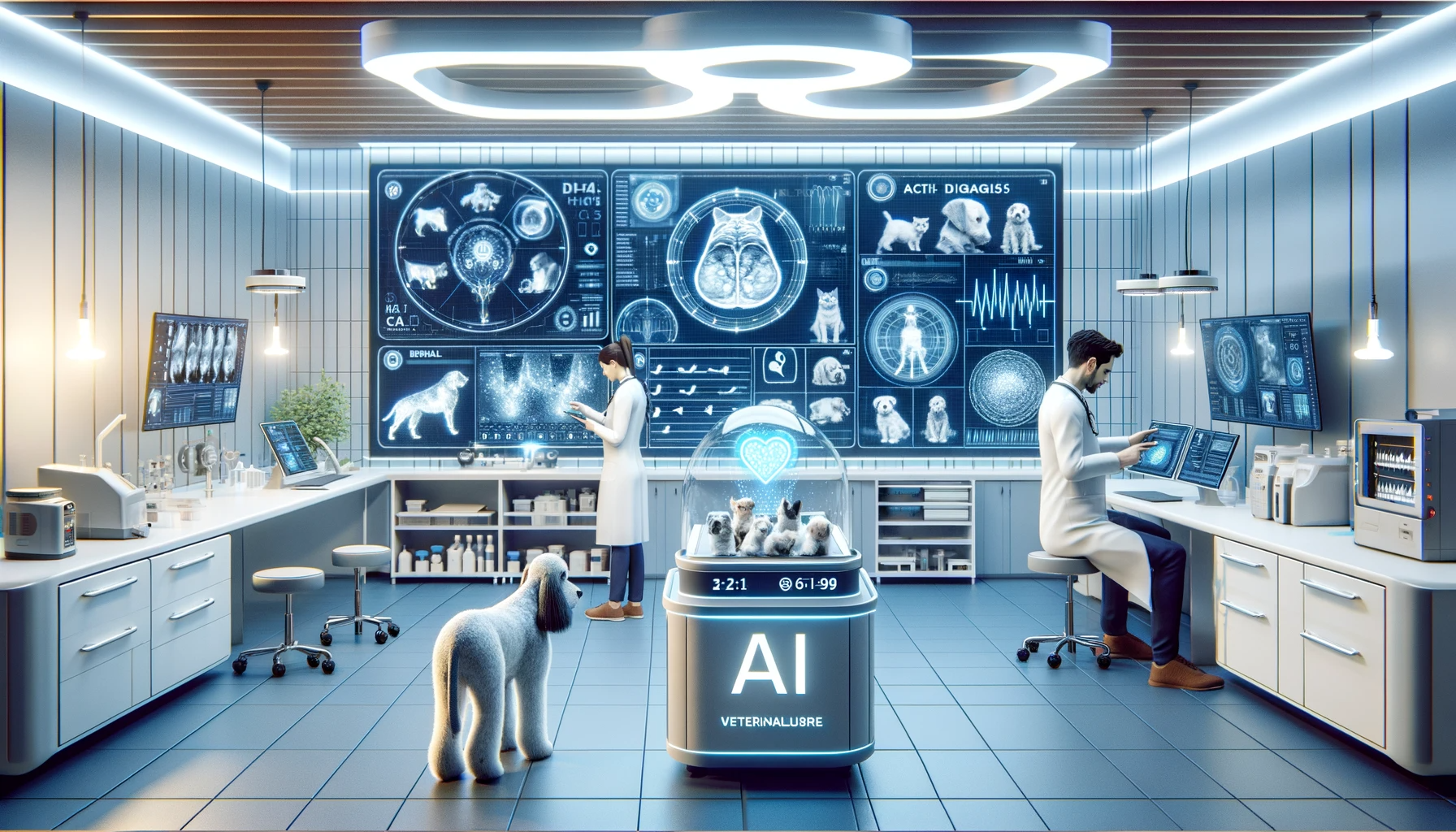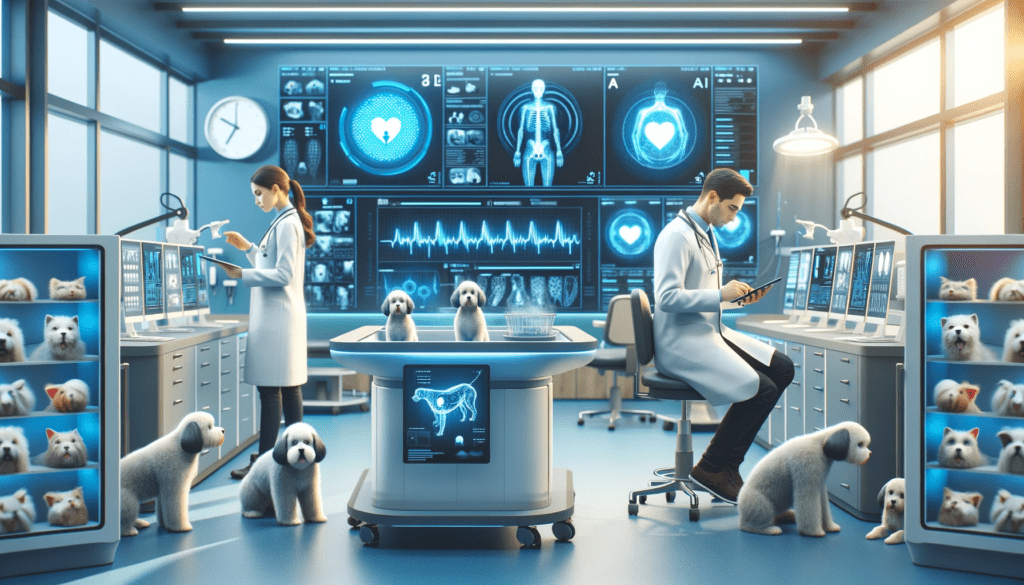In the realm of veterinary medicine, accurate and timely diagnostics play a crucial role in ensuring the health and well-being of animals. From domestic pets to livestock and wildlife, the ability to diagnose diseases quickly and accurately is fundamental to effective treatment and care. Traditional diagnostic methods in veterinary practice, while effective, often face challenges such as variability in disease presentation, limited access to specialized diagnostic tools in remote areas, and the inherent complexity of some conditions.
In recent years, Artificial Intelligence (AI) has emerged as a transformative force across various sectors, medicine being one of the most notable. AI’s capability to analyze vast datasets, recognize patterns, and make predictive decisions is revolutionizing medical diagnostics and treatment plans. Its application ranges from advanced imaging analysis to the interpretation of complex clinical data, offering insights that were previously unattainable with conventional methods.
This article aims to explore the potential of AI in radically transforming diagnostic tools and treatment plans in veterinary medicine. The integration of AI into veterinary diagnostics promises not only to enhance the accuracy and efficiency of disease detection but also to pave the way for more personalized and effective treatment strategies. In doing so, AI stands to revolutionize veterinary care, offering profound benefits for animal health, the work of veterinary professionals, and, by extension, the field of veterinary science as a whole.
Background on Veterinary Diagnostics
Veterinary diagnostics have undergone a significant transformation over the years, evolving from rudimentary clinical assessments to sophisticated technological evaluations. Historically, veterinary diagnoses relied heavily on physical examinations and the vet’s experience and intuition. As veterinary science advanced, the introduction of technologies like X-rays, ultrasounds, and blood tests brought a more scientific and accurate approach to diagnosing animal ailments.
The importance of accurate diagnostics in veterinary care cannot be overstated. Correct diagnosis is the cornerstone of effective treatment and animal health management. It enables veterinarians to identify the specific cause of an ailment, choose the appropriate treatment, and provide proper care, thereby improving the overall health outcomes for animals.
Despite advancements, current veterinary diagnostics face several challenges. In many regions, especially rural or underdeveloped areas, there is limited access to advanced diagnostic technology. This lack of resources can lead to delayed or inaccurate diagnoses. Additionally, certain conditions, particularly those that manifest with subtle or nonspecific symptoms, remain difficult to diagnose. There’s also the challenge of non-verbal communication in animals, as they cannot describe their symptoms, making the diagnostic process more complex.

Fundamentals of AI in Medicine
Artificial Intelligence (AI) in medicine refers to the use of computer algorithms and software to mimic human cognition in the analysis, interpretation, and comprehension of complex medical and healthcare data. At its core, AI in medicine is about enhancing the capabilities of human practitioners through advanced data analysis and pattern recognition.
Key AI technologies relevant to medical diagnostics include machine learning, where algorithms learn from and make predictions based on data; image analysis, crucial in interpreting medical imaging like MRIs and X-rays; and data analytics, which involves analyzing large datasets to uncover trends and insights.
In human medicine, AI’s capabilities are already being showcased. For example, AI algorithms have been developed to analyze radiology images with a precision that matches or even surpasses that of human radiologists. Machine learning models are also being used to predict patient outcomes, personalize treatment plans, and even identify potential drug therapies for complex diseases.
AI in Veterinary Diagnostics: Potential and Advancements
AI holds significant potential to enhance diagnostic accuracy in veterinary medicine. By integrating AI, veterinarians can overcome many of the challenges posed by traditional diagnostic methods, leading to quicker and more accurate diagnoses.
In imaging, AI applications are particularly promising. AI algorithms can analyze X-rays, MRIs, and ultrasound images to detect anomalies that might be missed by the human eye. For instance, AI can be used to identify subtle changes in an animal’s tissue structure, indicating the early stages of a disease. This level of precision in imaging analysis can lead to earlier interventions and better treatment outcomes.
Laboratory tests also benefit from AI integration. AI can analyze blood tests, biopsies, and other samples more quickly and accurately than traditional methods. This rapid analysis is particularly beneficial in emergency situations where time is of the essence.
Real-world examples of AI in veterinary diagnostics are emerging. One such case is the development of AI algorithms for detecting specific cancers in dogs through blood tests, which has shown promising results in early trials. Another example is the use of AI in interpreting heart echocardiograms in cats, helping to diagnose heart conditions that are often challenging to detect.
These advancements not only enhance the diagnostic process but also contribute to more effective and individualized treatment plans for animals, ultimately leading to improved health outcomes and quality of life.
Improving Treatment Plans with AI
The application of AI in veterinary medicine extends beyond diagnostics into the realm of treatment planning. AI’s ability to process and analyze vast amounts of data can significantly aid in developing more effective and individualized treatment plans for animals. By incorporating various data points, including the animal’s medical history, genetic information, and current health status, AI algorithms can assist veterinarians in creating tailored treatment strategies that address the specific needs of each animal.
AI’s role in predicting treatment outcomes is another area of growing interest. Predictive models can analyze previous treatment results and ongoing research to forecast potential outcomes and complications of proposed treatments. This predictive capability is particularly useful in complex cases where multiple treatment options are available, helping veterinarians make informed decisions about the best course of action.
Furthermore, AI is making strides in the field of surgical planning and execution. AI-assisted surgical planning involves using 3D models and simulations to plan surgical procedures, which can enhance the precision and effectiveness of surgeries. In some cases, AI-driven robots are being used to assist in surgical procedures, providing high precision and reducing the chances of human error.

Challenges and Ethical Considerations
While AI offers immense potential in veterinary medicine, its integration comes with technical, logistical, and ethical challenges. Technically, the implementation of AI requires significant investment in infrastructure, training, and data management. There’s also the challenge of ensuring that AI systems can effectively integrate with existing veterinary practice technologies.
Ethical considerations are equally important. The increasing reliance on AI for diagnostic and treatment decisions raises questions about the role and skills of veterinary professionals. There’s a concern that over-reliance on AI could diminish the importance of clinical judgment and experience. Additionally, the impact of AI on veterinary training and employment must be considered, ensuring that the workforce is equipped to work alongside these advanced technologies.
Data privacy and security are other critical concerns. As with human medical data, patient (animal) data must be handled with utmost confidentiality and security. Ensuring the protection of sensitive veterinary data against breaches and unauthorized access is essential.
Future of AI in Veterinary Medicine
Looking ahead, the future of AI in veterinary medicine is poised for significant advancements and broader applications. Emerging trends include the development of more sophisticated AI models capable of handling complex diagnostic and treatment scenarios. Additionally, AI is expected to play a crucial role in veterinary research, aiding in disease prevention and the development of new treatments.
The potential impact of AI on veterinary medicine is vast. It could lead to earlier detection of diseases, more precise treatments, and overall better health outcomes for animals. AI could also democratize access to advanced diagnostic and treatment options, making high-quality veterinary care more accessible to animals in remote or underserved areas.
Predictions for the future suggest that AI will not only enhance veterinary practice but also potentially reshape the entire field. It could lead to new specialties within veterinary medicine focused on AI and technology-based treatments, changing the landscape of veterinary care.

Conclusion
In conclusion, AI presents a transformative opportunity in veterinary medicine, particularly in diagnostics and treatment planning. Its potential to improve accuracy in diagnosis, tailor treatments to individual patient needs, and predict treatment outcomes offers a new horizon in animal healthcare. However, the integration of AI into veterinary practice must be navigated carefully, considering the technical, ethical, and data security challenges.
As we look towards the future, AI stands to not only complement but also enhance the capabilities of veterinary professionals, potentially reshaping the field. It promises a future where veterinary care is more precise, effective, and accessible, ultimately leading to better health and welfare for animals. The journey towards this future requires continuous research, development, and collaboration among veterinary professionals, AI experts, and animal caregivers.
